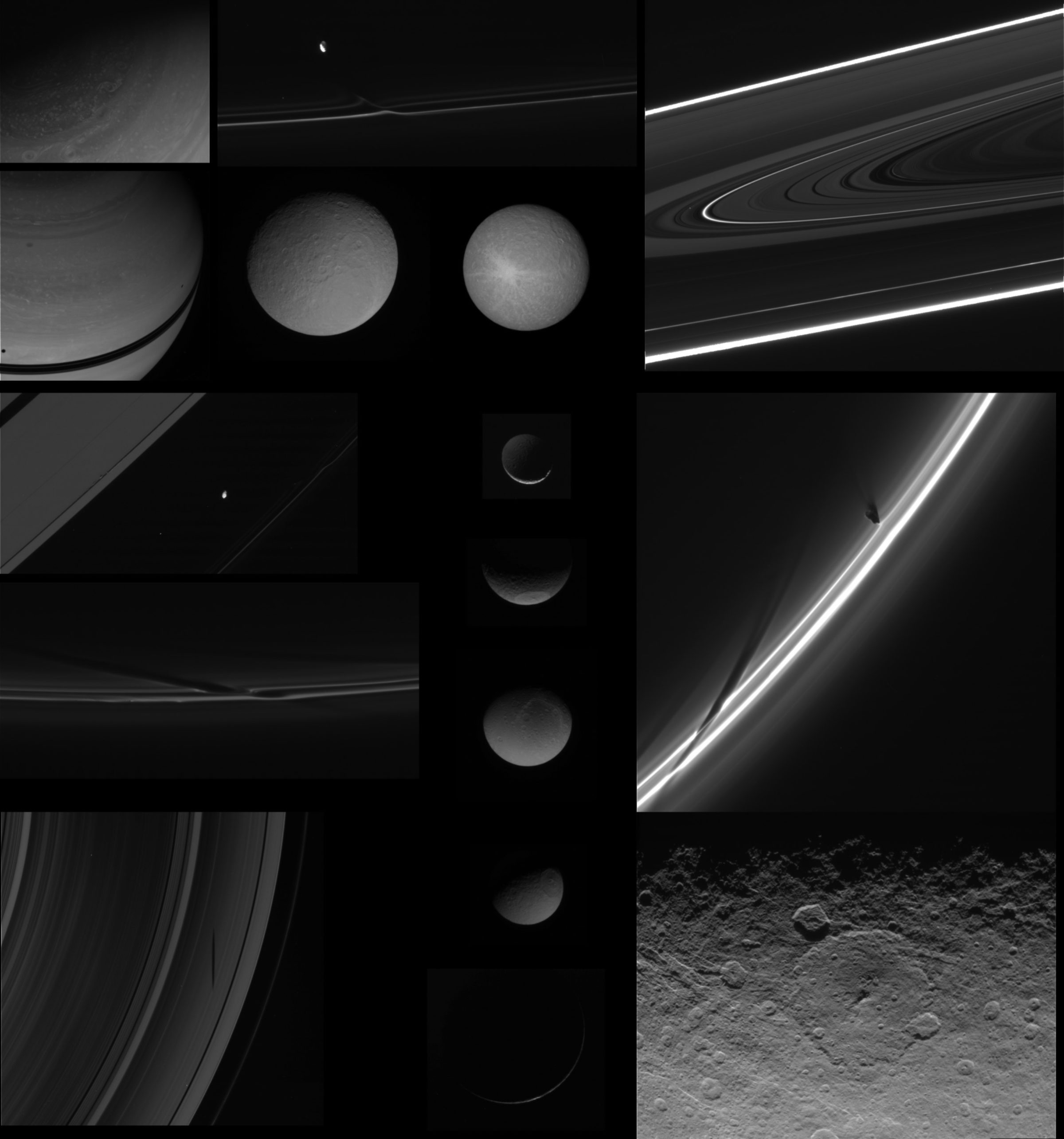Emily Lakdawalla • Jan 13, 2010
Highlights from the January 1, 2010 Cassini imaging data release
There were other things I had planned to do today, but I got sidetracked by the latest data release from the Cassini Imaging Science Subsystem; which means I spent most of the day browsing and oohing and aahing at pictures of Saturn and its moons.
What am I talking about when I say "data release?" Cassini is one of three missions currently spewing raw images to the Internet, and you can go to their raw images website to see new pictures from Saturn nearly every day. But I'm not talking about those pictures. I'm talking about the formal release of the high-quality data to the Planetary Data System (PDS), the resource for researchers who are interested in using Cassini data as the basis for their work. Cassini science teams are required by NASA to submit archives of their data to the PDS on a quarterly basis, that is, every three months. Each three-month chunk includes all the data acquired from nine to twelve months prior to the release date. So the January 1, 2010 data release includes everything acquired by Cassini from January 1 to March 30, 2009 in all its high-quality glory.
You can obtain the data here -- either browsing the folders or downloading the whole DVD-sized data volumes in massive .tar.gz files, which is what I did. After unzipping the, I used Piotr Masek's Cassini Orbiter Image Browser to click through the roughly ten thousand images that were included in this data release, and Björn Jónsson's Cassini image database to learn a little bit more about the rationale for the images.
In the nine-month time warp of Cassini PDS release land, the equinox hasn't happened at Saturn yet, but it's getting close, so the rings are super dark and the moons and ring wavelets are starting to cast shadows on the rings. Ring phenomena were foremost among Cassini's interests that quarter, with numerous long sequences like full azimuthal scans of the F ring and lengthy movies of the B ring (and its spokes) coming out of Saturn's cast shadow. Also, Prometheus was bouncing in and out of the F ring, pulling streamer after long streamer of dust behind it, and Cassini took lots of pictures of that. So close to the equinox, it was a great time to compare and contrast the south pole and the newly visible north polar regions, including its hexagon, with long multicolor sequences showing the rotation of cloud features. And there was a nice Voyager-class Rhea flyby on February 2. The images below are just a few of the highlights from this time period.

Top left corner: a view down on to Saturn's north pole showing lots of storms. Immediately below that: The globe of Saturn, with the shadows of the rings compressed to three narrow bands just north of the equator. Two moon shadows appear on the globe at the same time. Top middle: Prometheus and a streamer it has just pulled from the F ring. Below that: two views of Rhea at different phase angles; the right one contains a prominently rayed crater. Top right: a view of Saturn's rings at high phase and near equinox emphasizes the F ring and a dusty lane within the Cassini division.
Middle left: Both Prometheus and Daphnis are visible in one image, as well as the effects that the two moons have on nearby rings. Below that is a view of the F ring and the complicated braiding caused by Prometheus' repeated incursions. Middle center: three moons, from top to bottom: Mimas at very high phase and also lit by Saturnshine; Tethys; and Dione. Middle right: Prometheus is starting to pull out another streamer; it casts a shadow into the dusty outer edge of the F ring.
Lower left corner: Some moon casts a shadow onto the A ring. Center: two moons, Tethys (top) and an exceedingly high-phase view of Dione (bottom). Lower right corner: high-resolution view of a hexagonal crater on Rhea. In the order in which they are captioned, the images are W1609633673; W1609565607; N1615510312; N1614797855; N1615302503; N1614668991; N1612297333; N1611416824; N1611351371; N1613703988; N1610599686; W1617111781; N1613974889; N1614260705; and N1612272718.
Let’s Go Beyond The Horizon
Every success in space exploration is the result of the community of space enthusiasts, like you, who believe it is important. You can help usher in the next great era of space exploration with your gift today.
Donate Today

 Explore Worlds
Explore Worlds Find Life
Find Life Defend Earth
Defend Earth

